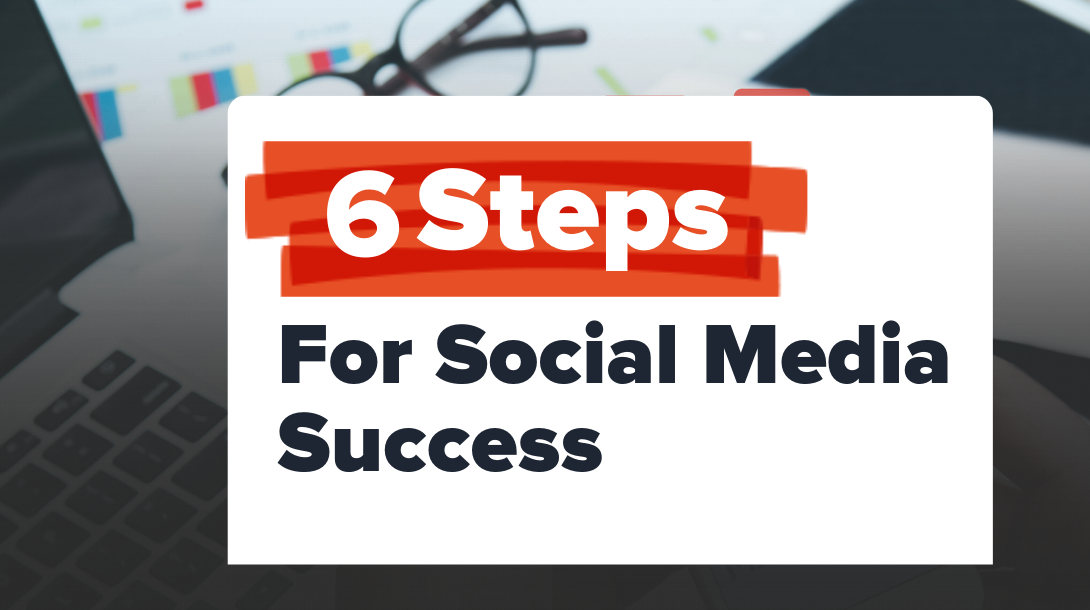6 Steps for Social Media Success


With so many tools at your disposal, it’s hard to know how to get started on social media. Every business has unique goals and objectives, so what does that look like for you? Maybe it’s increasing the number of followers, or driving traffic to your website.
A solid social media strategy has become integral to marketing success in the digital age. In order to stay relevant and connected, companies need a well-planned social media strategy to harness the full potential of online platforms to effectively convert an audience into potential leads.
Whether your business is new to the online world or you’ve already established an active social presence, there’s always room for improvement when it comes to setting social media goals for your business.
A solid social media strategy has become integral to marketing success in the digital age. In order to stay relevant and connected, companies need a well-planned social media strategy to harness the full potential of online platforms and effectively convert an audience into potential leads.
Still not sure how to get started? Let’s break it down into a few simple steps:
Step 1: Establish SMART goals and objectives
You can’t get very far without a map. The same thinking applies to planning your social media presence and tying them back to business objectives. These could look like: increasing the number of followers, driving more traffic to your website, or increasing engagement and building community around your brand.
Using a spreadsheet, make a good habit of consistently tracking goals that will help identify where your actions will guide you. In this planning phase, define your objectives and state the clear steps you’ll take to achieve them.
Step 2: Clearly define your target audience
If you don’t know who your audience is, how is your business supposed to solve their needs? To have a good social media strategy, it’s important to know who you’re specifically targeting your social content to: what do they value? What are their unique needs/wants?
Most platforms have built-in analytics tools to track basic metrics like audience demographics such as geography and gender, to more in-depth psychographic data tied to specific interests and behaviour.
From here, these valuable insights can help form specific buyer personas which should ultimately guide your marketing efforts. By doing this research, you’ll effectively learn how to best serve your audience the right content at the right time.
Step 3: Decide on a relevant platform
Once you’ve defined who exactly your target audience is, the next step is to pick the platform that is best suited to reach them. Keeping in mind, no one can be everywhere For example, if your target client is B2B, a platform like LinkedIn might be more well-suited to address this persona’s particular needs, and your content
While it’s understandable to want to craft a presence on all of these channels, focus your strategy by picking 1-3 key platforms to maximize your efforts. The more channels you pick, the more effort that will be required to maintain them, so keep this in mind when crafting your social strategy.
Step 4: Conduct a Social Media Audit
Analyzing your current online presence will help address areas of opportunity and potential weaknesses that could be impeding your social growth.
Make a list of all your existing platforms and consider the following insights:
-
Channel: profile information (name, URL), are the current handles consistent across channels?
-
What types of content
-
Frequency: how often are these channels being posted to? What is the optimal time to post that best resonates with your target audience? (lots of opinions on this, and algorithms are constantly in flux, so it’s important to keep this in mind)
-
Performance: engagement, impressions, sessions, clicks, etc.
While most of this can be done manually in a spreadsheet, social media management tools like Hootsuite and Keyhole are great platforms for navigating through these metrics and can assist with content scheduling and planning.
Evaluate your successes and identify any key patterns. What kinds of content seem to resonate best with your target audience? If you’re unsure how to start, do a competitor analysis to determine who the key influencers and advocates in your space are. It’s always a good idea to keep an eye on the competition, and this could point to gaps in your own strategy.
Make sure to tie these valuable data insights back to your business's specific goals and do a regular social media audit every 1-3 months to measure success and take action where necessary.
Step 5: Create a Content Calendar
Start small by planning two weeks out, building up to implementing a consistent long-term plan.
Consistency is key! Create a consistent posting schedule that optimizes when your followers are the most active. The data insights from your social media audit are particularly valuable here and should help guide your posting strategy.
Scheduling your social content in advance not only saves time and team capacity but also allows you to more effectively align campaigns to the brand’s key messaging and marketing objectives.
If you’re stumped coming up with content themes, consider leveraging social media holidays that are relevant and will drive engagement from your target audience. HubSpot has a great calendar reference here.
Step 6: Keep the momentum going
Consider what channels are working effectively and driving engagement from your target audience; what channels are driving the most suitable results to achieve your business objectives?
Continue to keep track of audience data to evaluate what is and isn’t working. Don’t be afraid to put the brakes on a particular campaign or pivot your tactics if you aren’t seeing the results you were hoping for.
Still not sure where to get started with crafting a winning social strategy? We can help!
